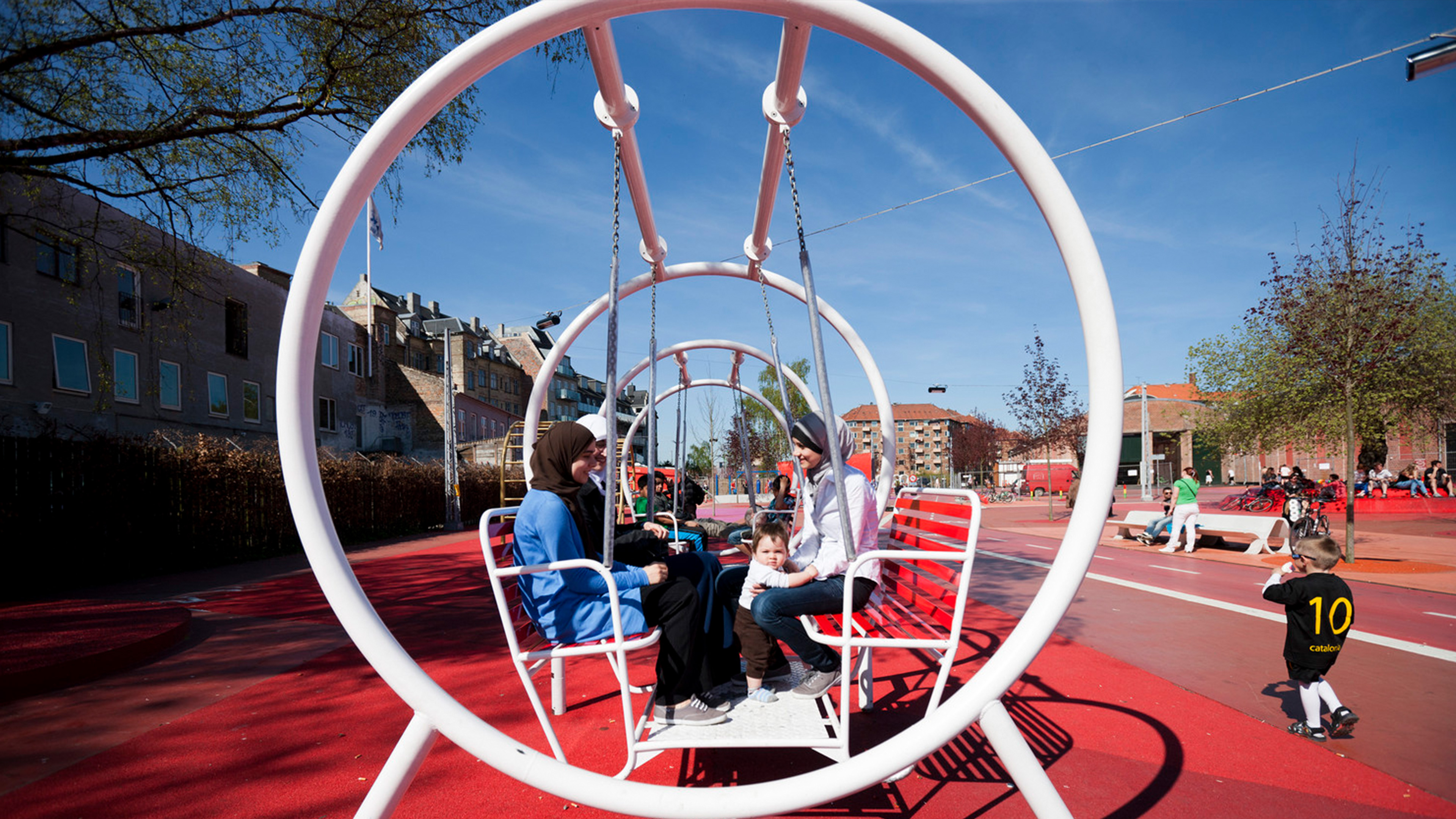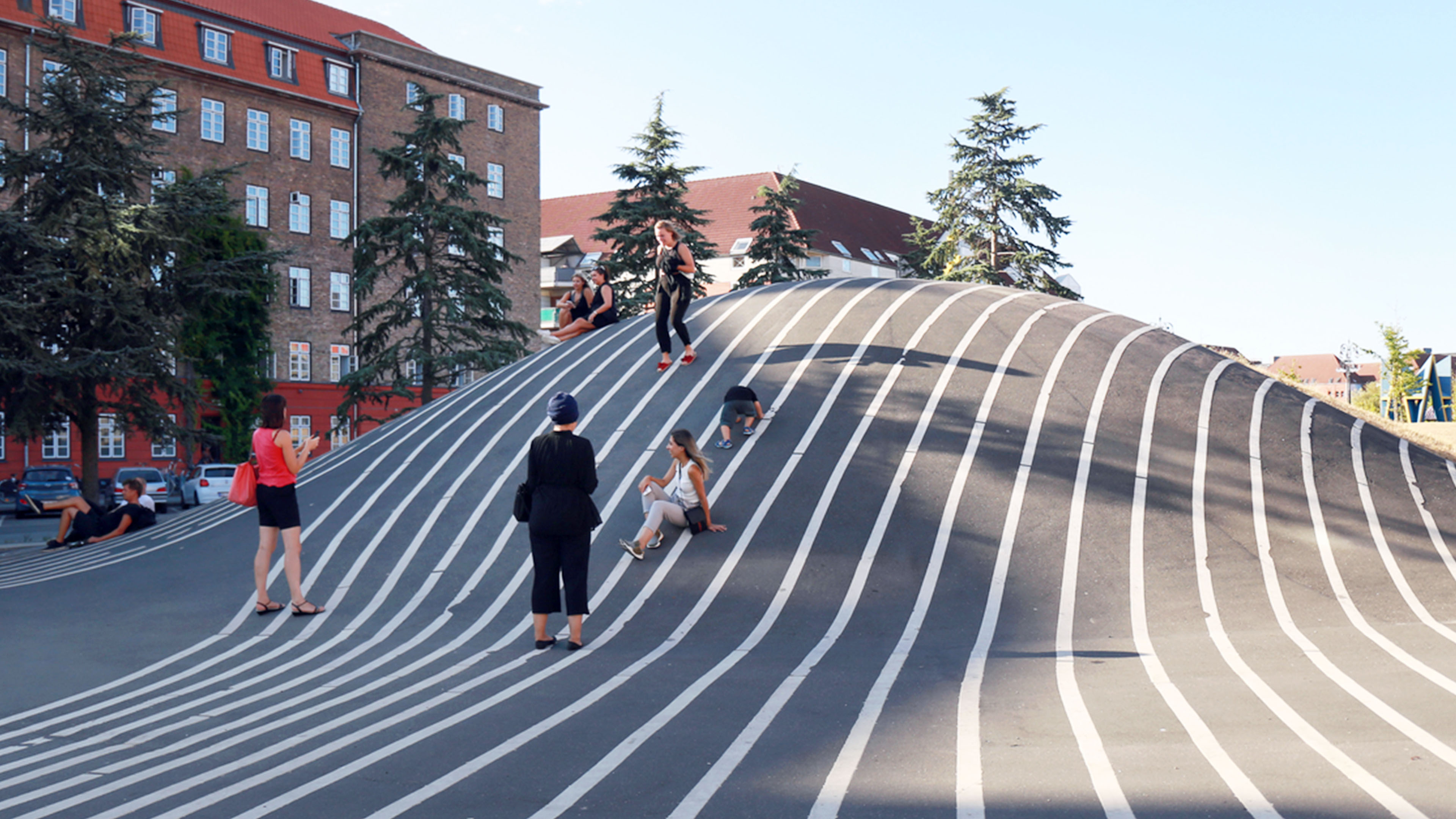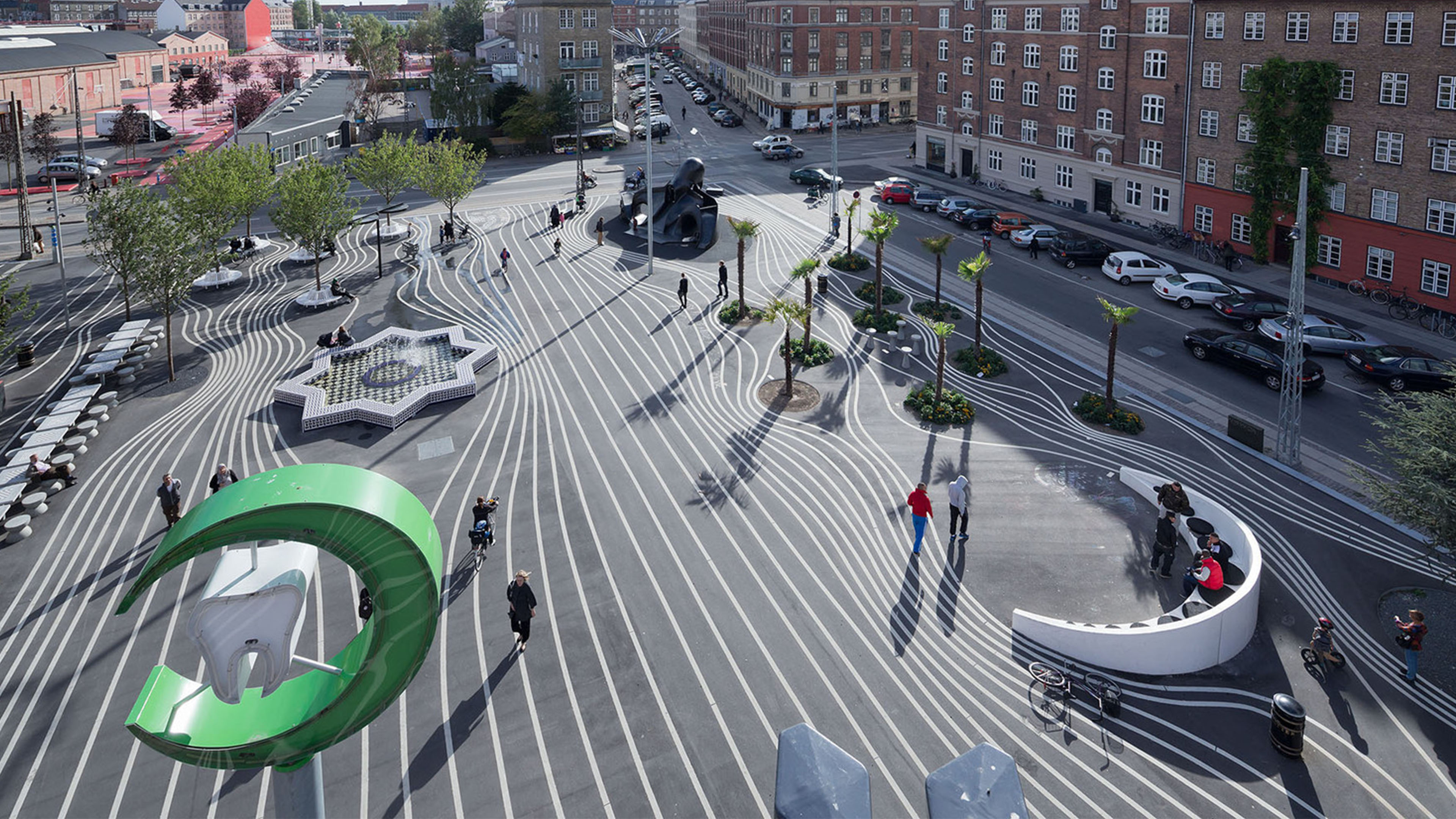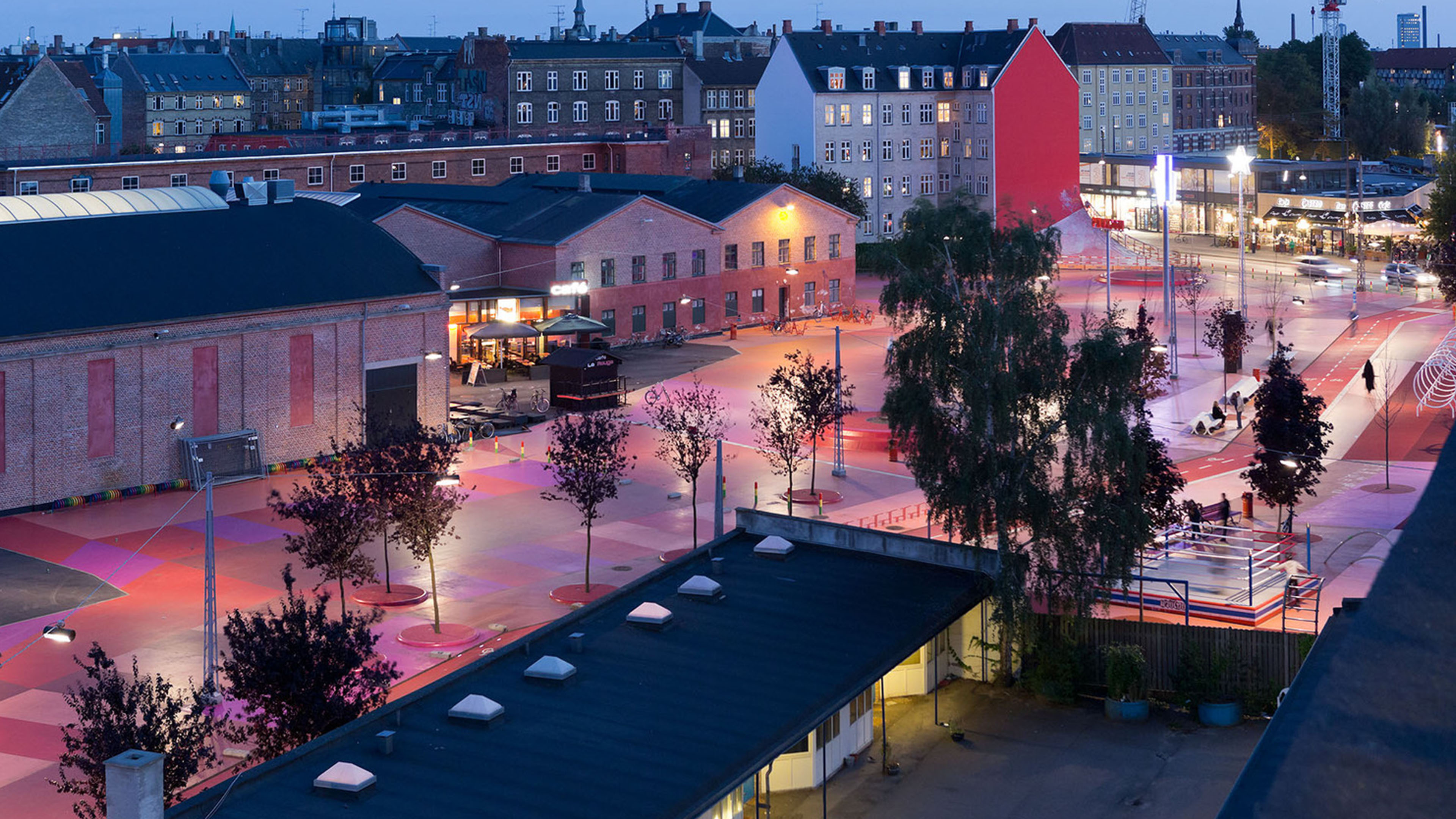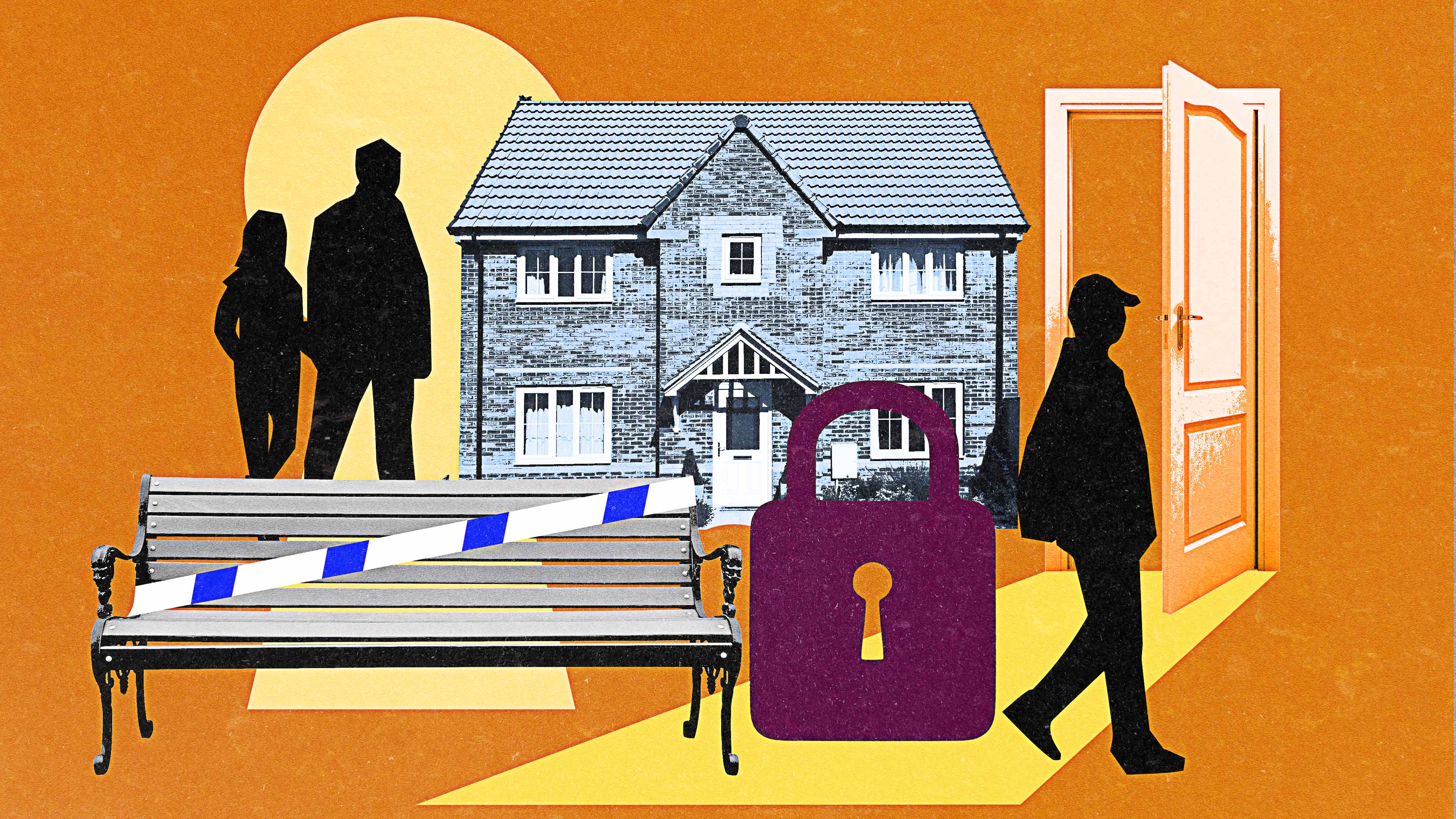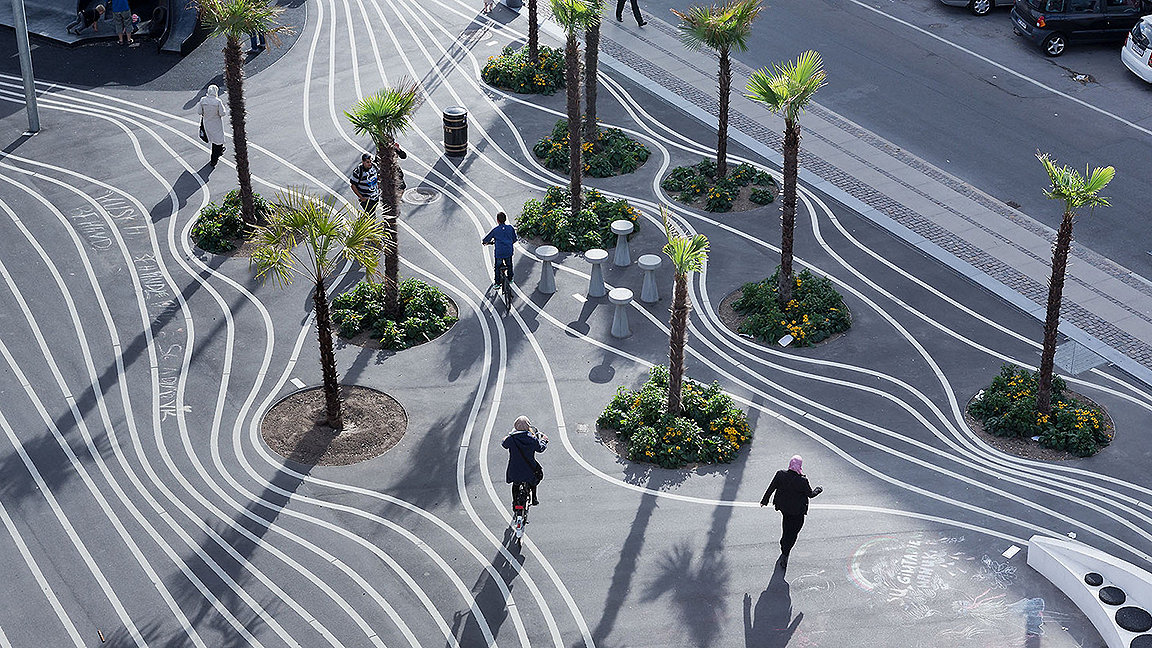
Superkilen Park. Photo by Iwan Baan
Raised 4.3 metres in the air, a muscular, roaring red cat sculpture with golden teeth adorns the city centre square in Umeå, northern Sweden.
The sculpture, called Listen, is the city’s tribute to the far-reaching Me Too movement and its way of using art to talk about women’s experiences in public spaces. But it’s also an evocative symbol of the city’s 34-year journey integrating gender equality into every aspect of its urban planning and infrastructure.
Despite decades of fighting for gender equality by citizens around the world, Umeå’s spatial equality strategy is still incredibly rare. In fact, in countries that boast gender progression, their built environments are still largely designed by men, for men and it’s this that compounds societal inequalities. “It’s pretty typical that people in positions of power get to design and shape things based on their own experience. And if that's primarily men, then that is the result we get,” says Nicole Roach, co-chair of Women in Urbanism Canada.
The consequences of creating cities and spaces that fail to meet the needs of women filter into every aspect of their lives. Public transport that is predominately used by women but designed around male commuter patterns. Unsafe streetscapes with poor lighting. The chronic lack of toilets and clean sanitation. Even snow clearing in winter cities has a gender bias. The results of this default-male design can be devastating.
In the UK, 97% of young women have suffered sexual harassment in public. In London, 40% of sexual assaults take place in public spaces, while in Canada a third of women have experienced unwanted sexual advances in the street. UN Women, the United Nations organisation for gender equality, says the threat of sexual violence alone reduces women and girls’ freedom of movement and their ability to take part in public life.
So, how in a male-dominated built environment profession, can we challenge and change this pattern and ensure we design spatially equal places that meet the needs of all communities?
Understanding design bias
Women in Urbanism’s Roach says a large part of this is raising awareness and understanding that gender neutral design actually means male design. “In looking at our cities, things are very spread out, very car dominated and are very inaccessible, but it's an area of gender equality that isn't really considered,” she says. “And it really should be. We can't look at policy or public transport or sidewalks as gender neutral, nothing is gender neutral here, so we really need to talk to women.”
A handful of cities across the world have already understood the impact of male-bias in spatial design. Umeå, Vienna in Austria, Canada’s Vancouver and Edmonton and most recently Glasgow in the UK, have all moved to ‘gender mainstreaming’. This means looking at policy, planning and urban development through the eyes of women too and ensuring equal design and resource allocation.
For more than 30 years, both Umeå and Vienna have shaped their cities through this policy. Vienna has completed over 60 different projects that have used gender mainstreaming. The first was a social housing complex, Women-Work-City, designed by and for women in the late 1990s. This included pushchair storage in every level, flexible layouts and wide stairwells. Play spaces, a nursery and a doctor were also included in the complex in recognition of how women were having to travel for these facilities across the city. It has since turned its gender lens on street lighting, widening pavements, developing a new multi-billion Euro neighbourhood as well as ensuring that its parks and recreation spaces work for young girls and teenagers.
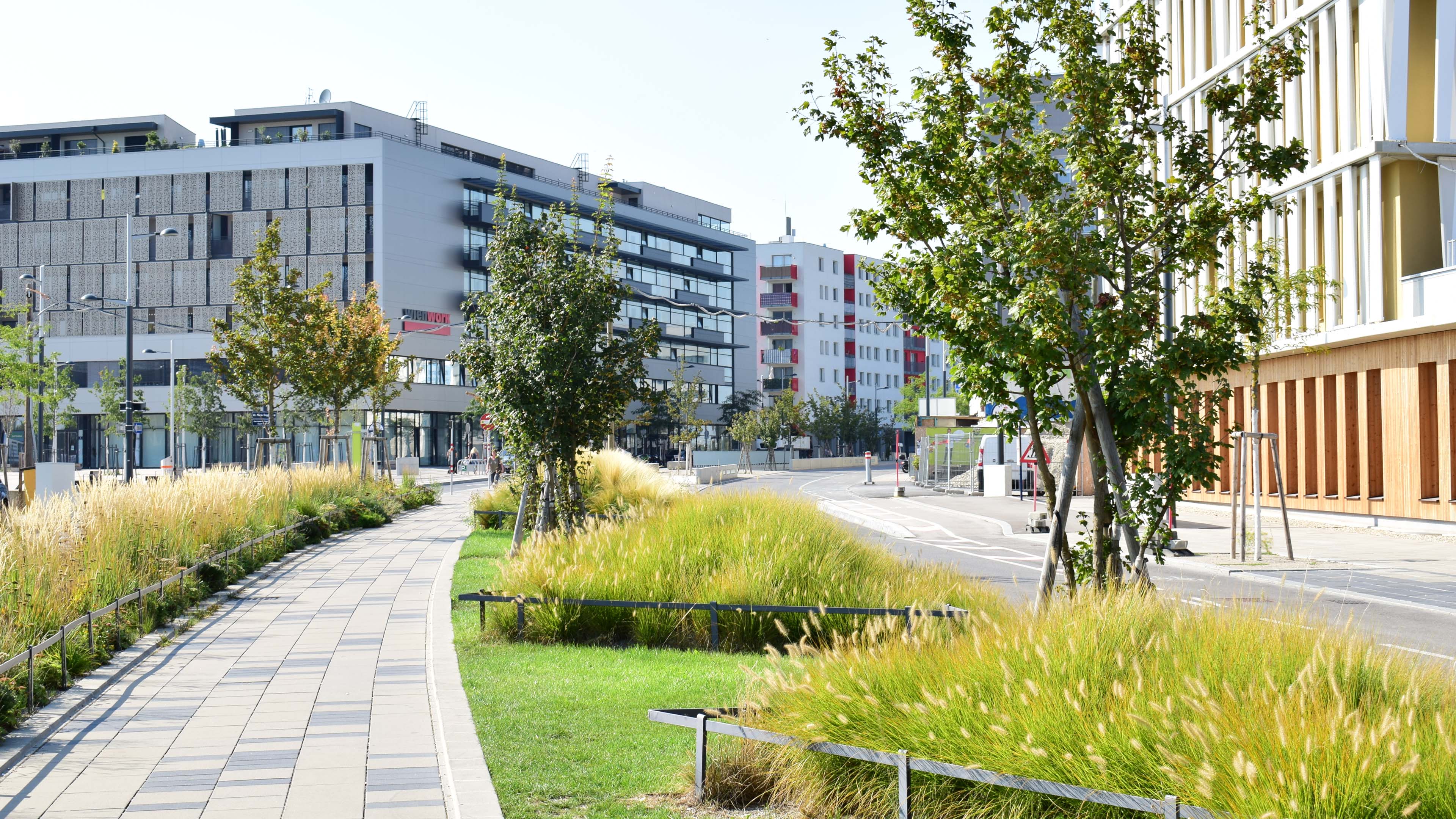
Aspern, Vienna
Make space for girls
It is parks, and the dire lack of facilities for teenage girls in the UK, that inspired the creation of Make Space for Girls, a campaign charity. Set up by two mothers of teenage girls during the pandemic, the charity is arguing that gender mainstreaming needs to start at the beginning of when women are “designed out” of public spaces – as teenagers
Drawing on the work of cities such as Vienna, the group started to assess why there were so few facilities in the UK’s parks that were designed specifically for girls. Its own research revealed that park facilities for teenagers were almost exclusively based around the needs of boys, with the default installations of skateboard parks, BMX tracks and multi-use games areas that are then used by 90% boys.
The charity describes it as “discrimination hiding in plain sight”. The organisation’s co-founder Imogen Clark says this complete disregard for girls in parks impacts on their health, safety and wellbeing and contravenes equalities legislation. And she says this is about more than just parks. “If a place is sending you a message that this is not for you, you’ll retreat back indoors. So, I think it’s an important part of making girls feel that they have a right to these spaces.”
Clark is urging the industry to take a more holistic view of park facilities – for councils to engage more with developers and for those professionals to ask what local girls want. She adds that there’s a huge gap in best practice and data and is already working with groups of teenagers to find out their needs. But she warns that there are no “quick fixes”, this route takes more time and is more complex. “Making a place that feels welcoming for girls is more than just putting in a ‘thing’. It’s about creating an environment that is welcoming, it’s about lighting, sighting of the space, so you have informal surveillance. It’s about collecting data to show who is using it and why.”
Make Space for Girls uses the example of Superkilen in Copenhagen as an inclusive park that works well for teenage girls without being designed specifically for them. The park was created on a long strip of land, with a bicycle track running through the middle of it and no dark corners that feel unsafe.
Superkilen Park, Copenhagen. Photo 1 by Torben Eskerod, photo 2 by Maria Gonzalez, photos 3 and 4 by Iwan Baan
Gender-segregated data
Collecting data and understanding the different usage patterns of women has played a key part in the approaches of Vienna and Umeå. Crucially both have used gender-segregated data. “The basis of our work is the data,” says Linda Gustafsson, Umeå Municipality’s equalities officer. “From that we know about how men and women travel, how they consume and what they want. If you have the data, you can start asking ‘why is it like this?’ and ‘what can we do to change?’”
Roach adds that data has been crucial in raising awareness. “[This has] definitely been aided by more data being available, so it's not that women are making it up, it's not that we're not capable, it's that these systems and environments have not been built with us in mind.”
Louise Barth MRICS, a member of the RICS Women in Surveying group and founder of Barth Consulting, says a lot of default-male design decisions have been cost related. “Young women and girls walking down narrow spaces could feel intimidated, but to make it a bit wider there’s a cost implication,” she says. Barth, who has spent more than 30 years in the property industry as a quantity surveyor and then as capital allowances consultant, says those that understand gender-bias need to raise awareness. “It is putting your hand up and saying: ‘you might not have thought of this before’, because we’ve put up with existing concepts and they don’t work.”
Barth adds that organisations such as RICS should voice support and issue best practice to ensure spatial diversity is mainstream. “There are a lot of little things that can be done to make big changes,” she says. “And if we all get behind this, we will feel empowered to raise this at every opportunity.”
Case study – Umeå, Sweden
“The connection between the municipality, the region and the university is absolutely one of the reasons that has made the work here more successful,” explains Linda Gustafsson, Umeå Municipality’s equalities officer.
Umeå began working towards gender equality in its urban development in 1989 and now offers a ‘Gender Landscaped’ tour that takes visitors around 25 stops. These include the 170-metre Lev tunnel with its light transparency and rounded corners and the Freezone park, built in collaboration with local girls. The result, Gustafsson says, is a place that women recommend far more highly than any other city, while there is a cultural acceptance of its work towards spatial equality.
She says when the artwork ‘Listen’ was commissioned there was no debate or controversy around it. “The art gives you an opportunity to talk about Me Too, or women's experience in public space and I think it’s really beautiful that we can do that,” she says.
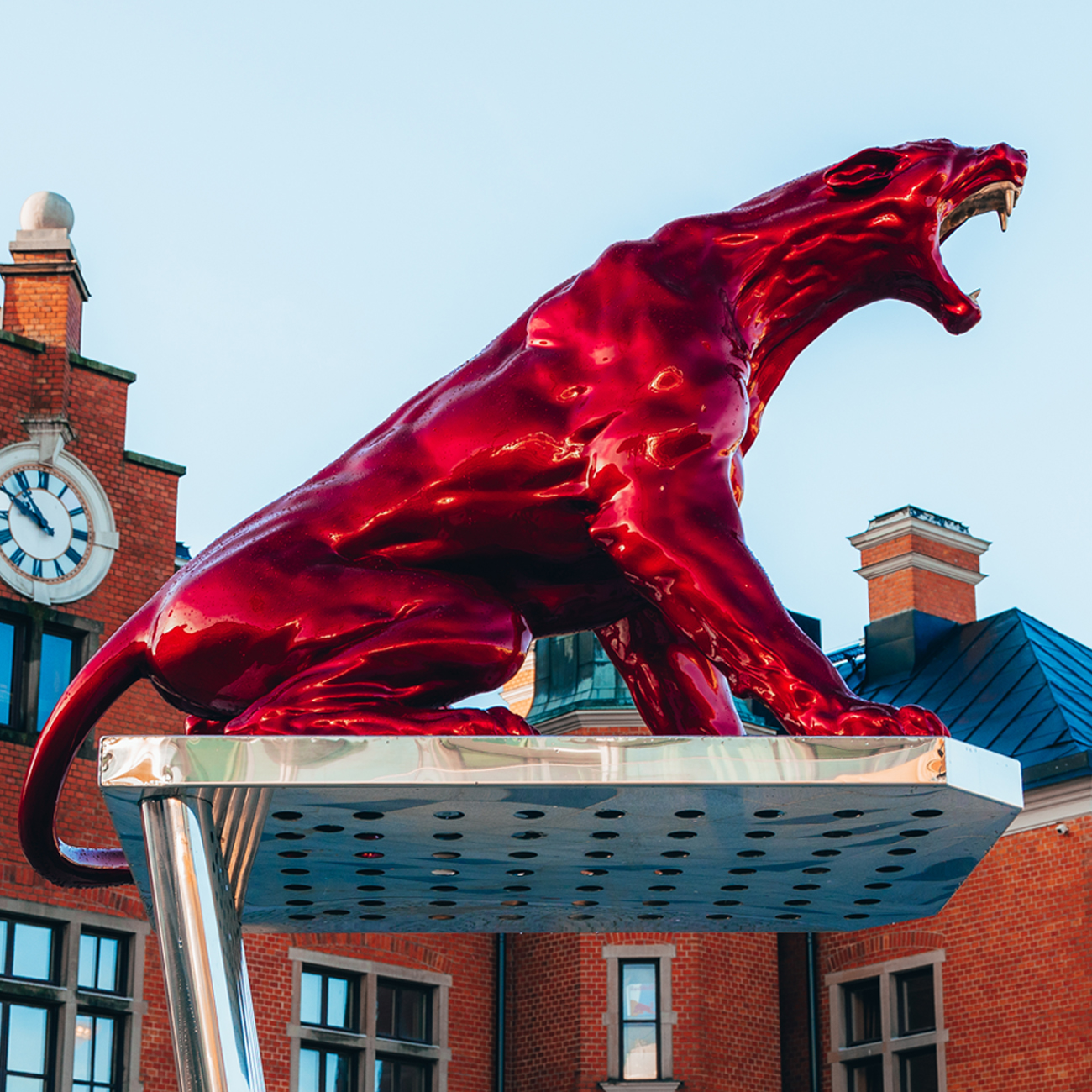
'Listen.' Photo by Philip Avesand for Visit Umeå

